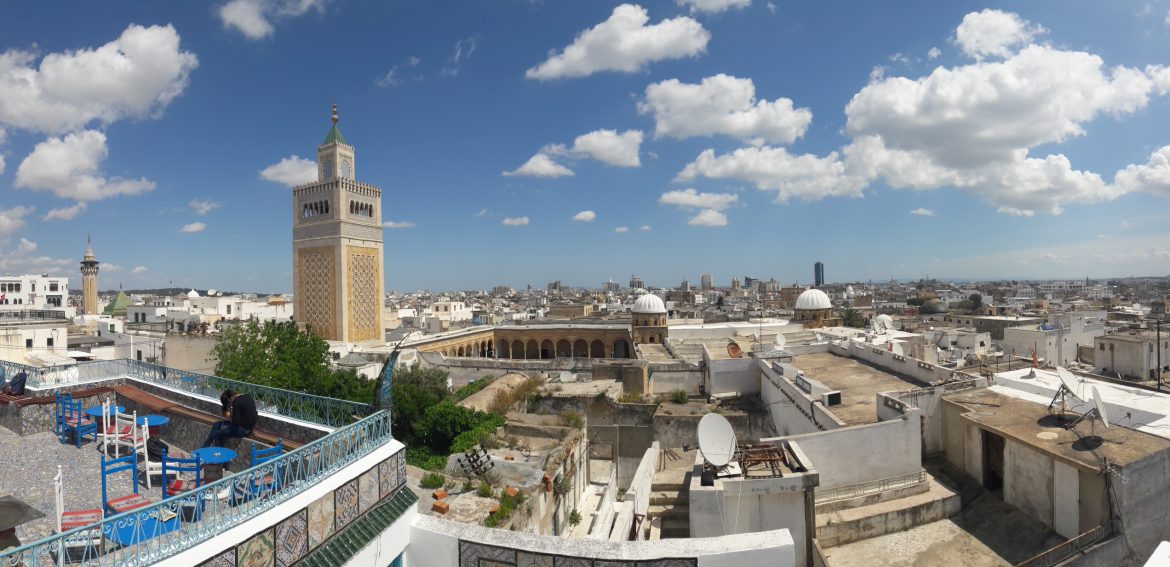The following article is written neither by a skilled architect nor by a qualified professional, rather by a mere observant.
The rich history of Tunisia allows the architectural scene several ingredients with which to cook scrumptious architectural meals. From the blue and white of Sidi bou Said, and the fierce historical walls and narrow streets of the Medina of Tunis, to the gorgeous minimalist Djerba, to the desertous Berber palaces of Tataouine, Tunisia is rich with different architectural styles that –separately- make up small heavens scattered all over this beautiful shore of North Africa.
Unfortunately, a mixture of taste often leads to a Shakshuka, a dish I am sure was created by an indolent, straight, male student. In the title and throughout the article, I am intuitively using the word “Shakshuka” as a desperate attempt to avoid using the ugly, sorrowful word: Tragedy.
The often squalid poor slums scattered on every corner of the country seem to be cast under the shadows of the more prestigious districts, always pushed off the sight. But once seen, they cannot be unseen. A friend of mine calls them an architecture of “canned sardines.” Talking about a post-modern wave of architecture in Tunisia is therefore hard but a post-apocalyptic one is obvious. Although my words might seem either too sincere for the honest or too harsh for the sensitive, my intentions are beyond mere disapproval. I am always haunted by the question of why one area differs from another within the same country and sometimes even within the same neighbourhood. Is it a question of capital, taste, or politics?

The conundrum of aesthetics and taste has long been a mystery to philosophers, from Kant who believed in pure aesthetics to Bourdieu who believed in a shifting taste of classes. Taste, although it might seem generally personal and somewhat cultural, seems to be one mechanism of class division, a division which concrete and which lines are thick and clear. One can easily guess the status of the residents in any part of the country based on the architecture of that certain area. And when the less ‘rich’ (in capital not in culture) homes seek an aesthetic elevation, it seems that most of the time they venture to imitate the Sidi bou Said style; white walls and a blue door. Without this blemish, one usually finds a Turk-ish styled black iron door, walls of no or different colors, stairs harder to climb than the stairs of heaven, and of course, the clothes hanged to dry in every window or balcony.
This seemingly division of taste, I believe, is not at all related to the idea of a “personal taste” (which is rare), but rather to the capital. One only has to notice the business targets for architects and interior designers to see their employment is limited to the rather fancy areas; the poor, or the middle class, and even the upper-middle class, choose to spare the costs and design their own homes.
Although my generalization is doubtlessly flawed and exceptions can be found, most people would agree that taste is essentially associated with class… but not just! It is difficult to link the architectural division with taste or with the capital when one realizes that the state itself sets rules and limits any personal or individual touches. An example is Sidi bou Said where the state bans people from not conforming to the general scene and fines any attempt at resisting the blue and white. The Medina of Tunis as well, a UNESCO world heritage site, seems to always be under the gaze of both the national and international eyes. Even though they seem to gaze with more friendly eyes, due to the humble status of the inhabitants, limits are also to be found; A reminder of the fine a man had to pay due to painting the black stones with rainbow colors, a terrible sight and a complete Shakshuka, that’s true, but also a block for creativity and a restriction of personal taste.

Reaching my conclusion, you will neither find a conclusion, nor a resolution, for I have promised none. My mere objective was to put a question mark, and place the Tunisian styled architecture(s) under the microscope, in an attempt to better understand what cannot be understood. I will only find solace in agreeing that taste is neither linked to the capital nor to culture, nor to politics, taste itself has a Shakshuka of factors that shape it and re-shape it, it is linked to nothing and to everything. And although one would intuitively tell a bad taste from a good one, the reasons remain a mystery to me.
*The opinions and ideas expressed in this article do not reflect the views of Carthage Magazine’s editorial team. To submit an opinion article, please email info@carthagemagazine.com. Learn more.
If you would like to comment on this article or anything else you have seen on Carthage Magazine, leave a comment below or head over to our Facebook page. You may also message us via this page.
And if you liked this article, sign up for the monthly features newsletter. A handpicked selection of stories from Carthage Magazine, delivered to your inbox.

Fares Rjeibi, a student in Digital Management and Information Systems, a Masters graduate in Cross Cultural Studies, and an amateur writer.

